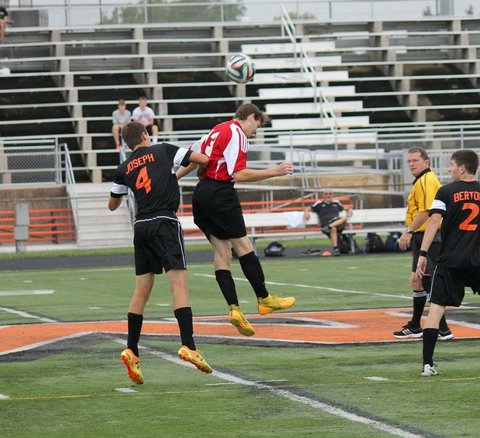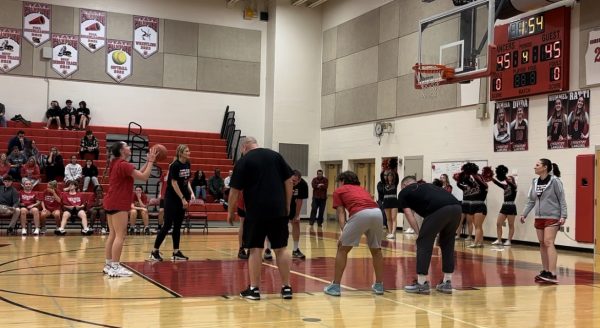Don’t change soccer rules: keep your head in the game

Junior Chris Reibman goes up for the header.
November 6, 2015
Posts beginning in 2014 from the Concussion Legacy Foundation (CLF), an organization focused on preventing youth concussions and injury, suggest that youth soccer organizations should take heading out of the soccer program until high school.
As a high school soccer player, I do not agree with this move because heading should be a skill that youth soccer players need to learn before they start high school soccer. In high school soccer, heading is very useful in situations like corner kicks and one-on-one balls.
The CLF estimates that only 1 in 6 concussions received are actually diagnosed, and 3.8 million concussions occur every year. The goal of the CLF is to “eliminate soccer headers prior to the high school level. Attempting to head the ball and colliding or falling is by far the greatest risk of concussions in youth soccer, causing more than 30,000 concussions each year. Heading accounts for nearly one third of concussions in youth soccer. The CLF argues that heading the ball or making head-to-head contact with one another can interfere with the development of the brain.
Linganore Athletic Director Sonny Joseph said, “The game has changed over the years. More use of the head and the contact can sometimes be dangerous,” but he doesn’t anticipate the rules changing.
The Senior Boys Director at FC Frederick soccer, Chris Spinks, agrees. “I think that children should be exposed to heading at a young age. They use smaller soccer balls.” According to Spinks, for every 10,000 athletes exposed to competitive soccer, females have a concussion rate of 4.8% whereas whereas males have a concussion rate of 2.8%.
“If you’re going to be playing soccer in high school, you need to have experience with using your head beforehand,” said Senior Boys Coach at FC Frederick, Jim Beck.
Beck believes that there is a very small chance of sustaining a concussion from a ball to the head. “Going up for headers and hitting another player is where it becomes dangerous,” said Beck.
There are other dangers, too. Heading is one of many. Junior Chris Reibman has experienced a long recovery from a concussion he got in a situation that did not involve a header. Riebman and Senior John Kirk were going after a ball when Kirk’s knee accidentally made contact with Reibman’s head, putting Riebman out of soccer for a total of one month and two days. The recovery was difficult. Most athletes who sustain concussions are not allowed to watch television or text, because those activities can stress the brain.
Beck suggests that if players want to avoid concussions, it can’t hurt to wear a scrum cap. A scrum cap is a form of headgear used by rugby players that protect their ears, which could help avoid injuries leading to concussions as well as other conditions such as cauliflower ear.
I think the reason students aren’t as inclined to wear the scrum headgear is because they fear that they will look ridiculous. There aren’t many soccer players who wear them except for some goalies because of the many tackles they have to make between all the players running with the ball in goal. If players were required to wear scrum caps, they wouldn’t be embarrassed because every player had to wear one. If scrum caps were implemented, concussions could be limited and possibly prevented.












